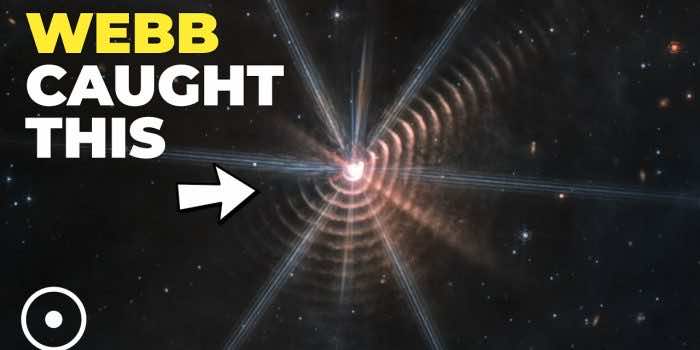The James Webb Telescope is back again with another masterpiece as it has recently revealed stunning images of a star and its companion star, which is definitely an uncanny sight to behold. The observatory took futuristic images of at least 17 rings produced by the effect of the star, which seems like “human fingerprints”. It should be noted that the formation of rings is a result of the close interaction of both stars, which eventually leads to the shaping of rings. In addition to this, this close formation of the stars happens once every eight years and their orbit plays a crucial part in bringing them close together. This demonstrates that JWST captured a certainly rare sight. Furthermore, the findings of the research have been published in the journal “Nature Astronomy.”

Coupled with this, the star and its companion star are collectively termed “Wolf-Rayet 140 (WR 140)” and are approximately 5,000 light years away from Earth. Moreover, Ryan Lau, who is an astronomer at the National Science Foundation’s NOIRLab, said, “We’re looking at over a century of dust production from this system. The image also illustrates just how sensitive JWST is. Before, we were only able to see two dust rings, using ground-based telescopes. Now we see at least 17 of them.”

An important aspect here that we should appreciate is the state-of-the-art capability of the JWST that made it capable enough to study the dust rings of the stars in a comprehensive and detailed manner. The “Mid-Infrared Instrument (MIRI)” played an important role in the accomplishment of this milestone because it was well-established in its domain. It should be noted that JWST has been designed to see efficiently through infrared light which the human eye is not capable to see. On the other hand, the Hubble Space Telescope can identify wavelengths of both visible and ultraviolet light.

To that end, it has also been revealed that these stars are about 25 times heavier in mass than the Earth’s sun and form elongated ring patterns as demonstrated by scientists. Similarly, Dr. Olivia Jones, Webb Fellow at the UK ATC in Edinburgh, and a co-author of the study, said, “Not only is this a spectacular image but this rare phenomenon reveals new evidence about cosmic dust and how it can survive in the harsh space environments. These kinds of discoveries are only now opening up to us through the power of Webb and MIRI.”


